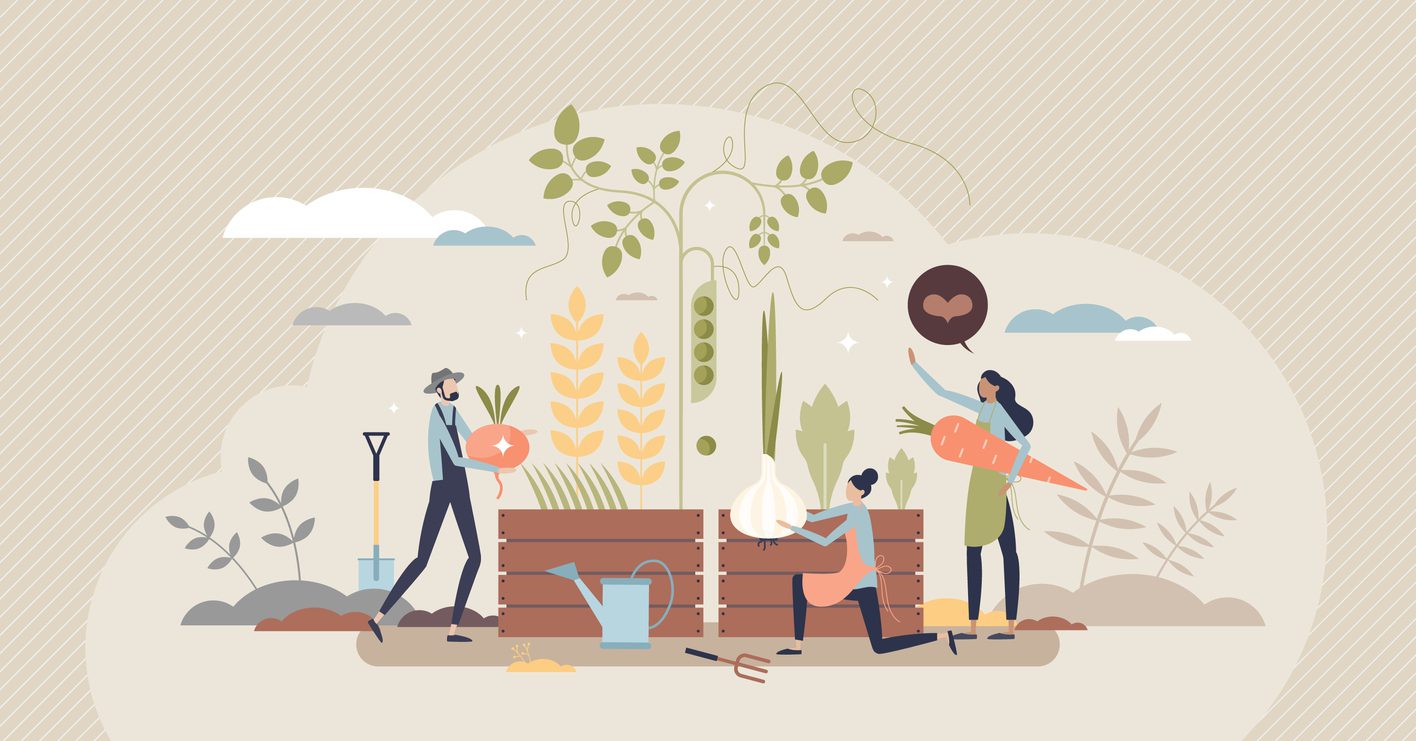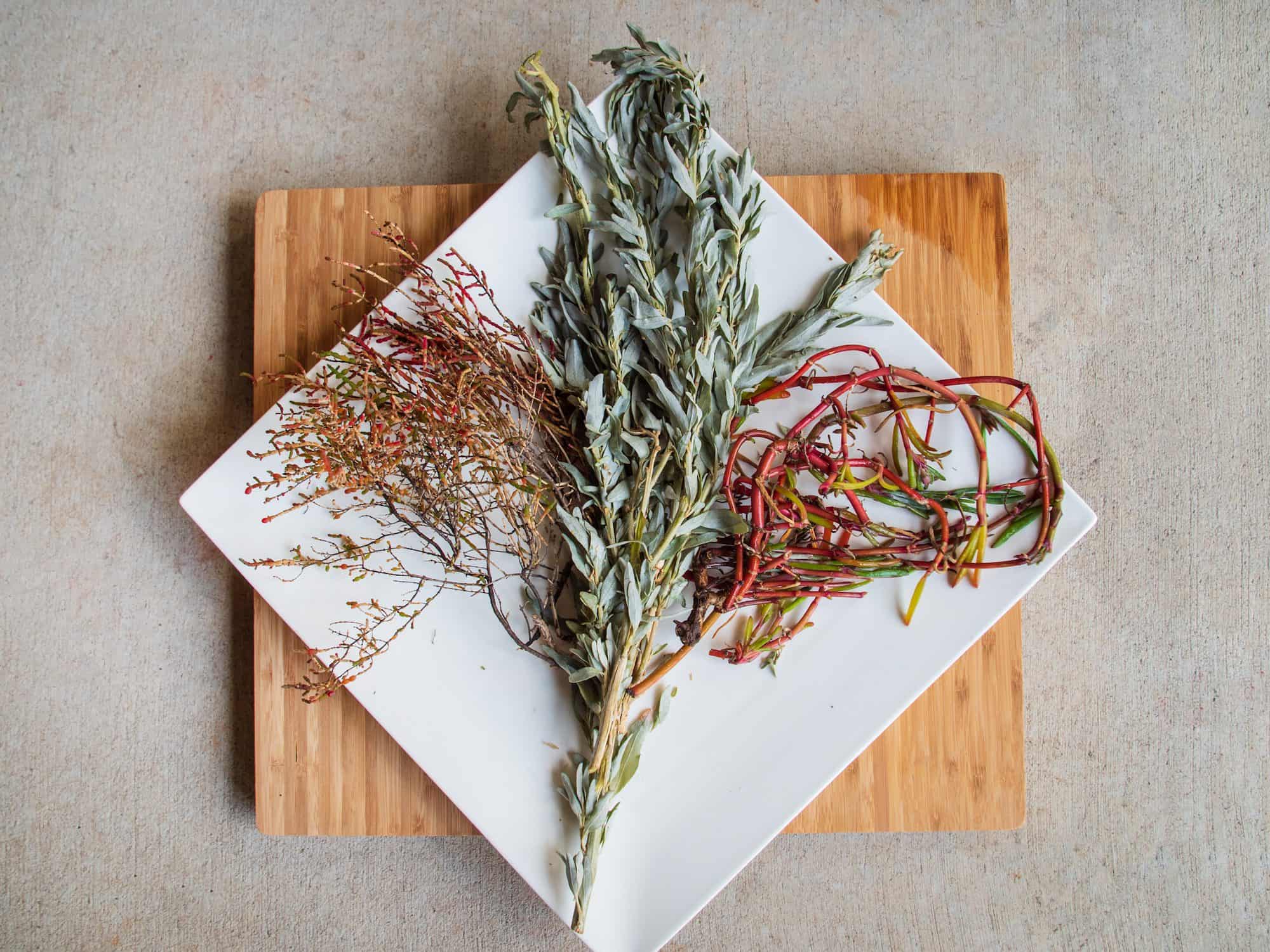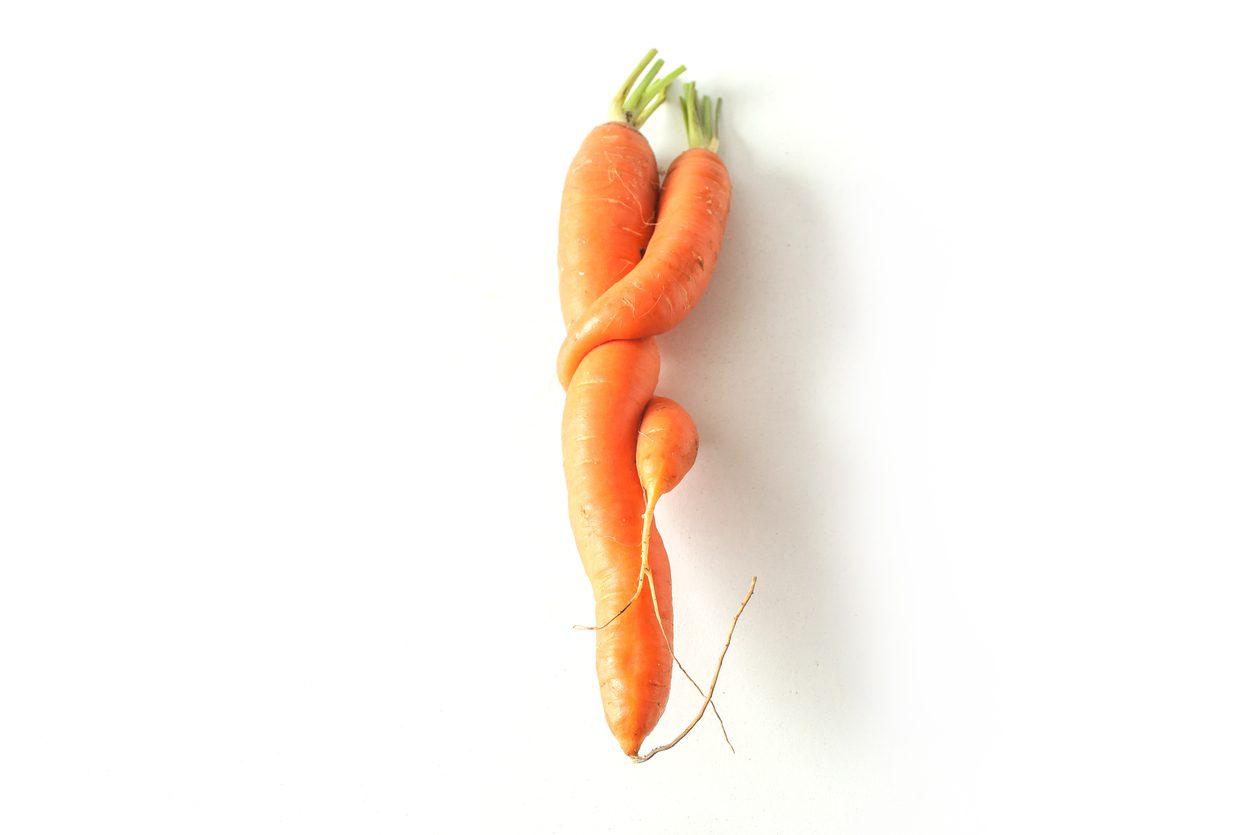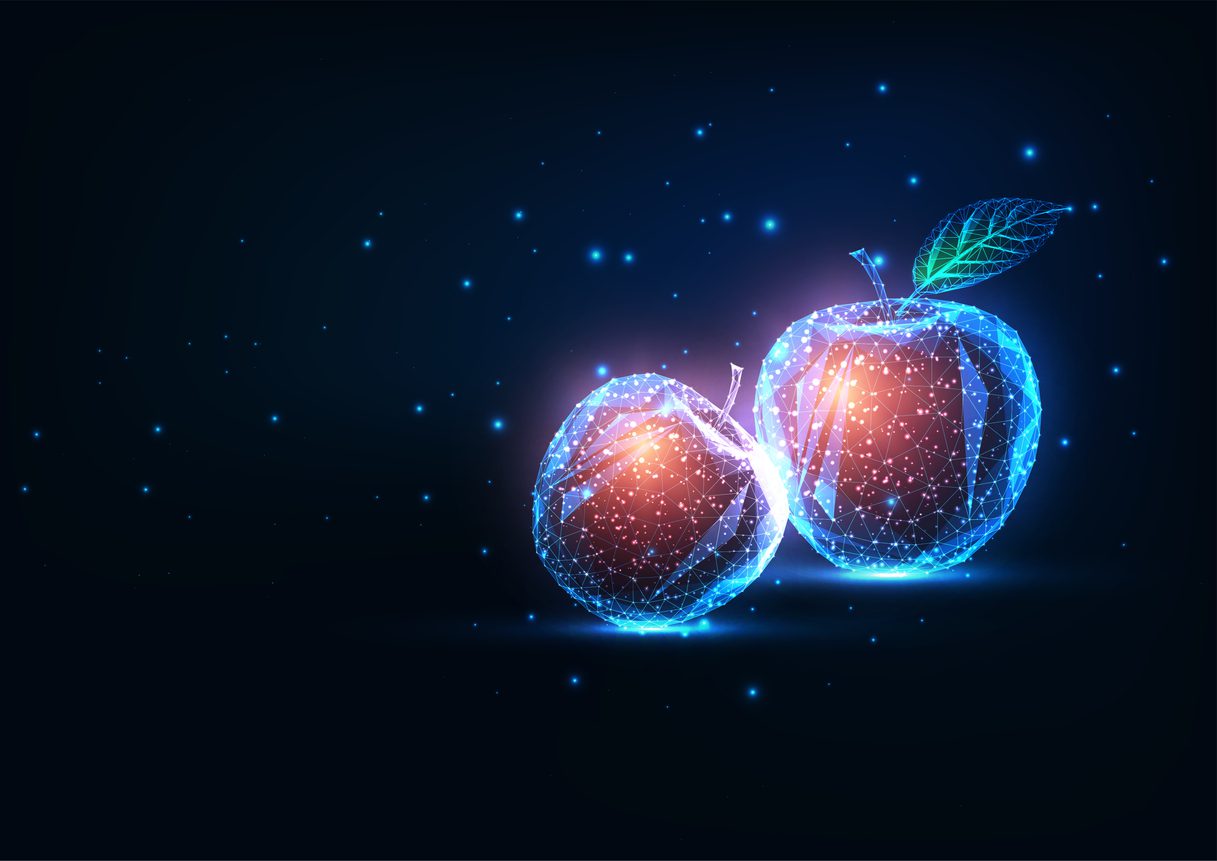When you look at the state of our global food system, there is one big question that world leaders, aid organisations and activists keep coming back to: how will we feed the world in the years to come? With the global population having just surpassed eight billion people, the urgency of finding an answer is becoming more and more evident.
The United Nations’ Food and Agriculture Organisation (FAO) has predicted that by 2050, the world would need to produce 70 per cent more food than it does today to feed an estimated 9.1 billion population.
The past year alone has brought to light the fragility of the global food system. Food prices have shot up around the world, the global wheat supply has been under threat amid the Ukraine invasion, and environmental disasters are making it harder and harder to farm as we once did.
The World Food Programme has called 2022 ‘the year of unprecedented hunger’, warning that “49 million people in 49 countries are teetering on the edge of famine.”

The question of how to turn those statistics around is something British writer and environmental activist George Monbiot seeks to answer in his latest book, Regenesis: How To Feed The World Without Devouring The Planet.
Monbiot warns that the global system is on the verge of collapse, with a number of factors contributing to this crisis. One of these factors is the standardisation of what we now eat. “One of the fastest global shifts in human history is the convergence towards a ‘Global Standard Diet’,” writes Monbiot.
“From nation to nation, even, in some places, valley to valley, the food people ate both shaped and was shaped by their discrete farming systems, histories and traditions. Originating in rich nations in the 1960s, then spreading rapidly across the rest of the world, one diet has bodyslammed the peculiarities of place and culture out of its path.”
Today, much of the food we eat comes from a small handful of species. “Just four plants – wheat, rice, maize and soybeans – account for almost 60 per cent of the calories grown by farmers,” he says.
As trade has expanded between food importers and exporters, nations are extremely dependent on one another when it comes to how they source their food. “Roughly 40 per cent of the world’s people now rely on food from other nations,” states Monbiot. “Countries that once produced a little less or a little more than the food they needed are now polarising into super- importers and super-exporters.”
Food shortages have plagued the world in the past year. Together, Russia and Ukraine produce roughly 28 per cent of the world’s wheat and more than 15 per cent of corn. Disruptions to trucking, rail and shipping routes due to the invasion could see the global deficit of wheat and corn reach 23 million to 40 million metric tonnes in 2023, according to McKinsey & Company.
It is clear that solving the world’s food crisis is going to require concerted action from governments, food and agricultural researchers and grassroots communities.
Rethinking agriculture
The move towards a standardised global diet has led to a loss in biodiversity, with FAO reporting that 75 per cent of plant genetic diversity has been lost since the 1900s. A general loss in biodiversity also impacts nutritional value, which is important for our survival. “We often give the loss of biodiversity an eco-environmental value,” said clinical nutrition director for Turin’s health authority, Andrea Pezzana at the Terra Madre Salone del Gusto 2022 conference.
“But biodiversity also has a nutritional value … hundreds of different types of plants produce different nutrients depending on the ecosystems in which they grow. If we help local communities and indigenous peoples to rediscover local seeds and traditional know-how in agriculture we will not only accomplish an environmental feat but we will be able to recover nutrients that are beneficial to our health.”
Of the some 250,000 known edible plant species, an estimated 150 to 200 are used by humans, according to FAO. The opportunity to consume more native edible plants is something many researchers and indigenous communities are exploring. In Australia, a research project between the University of Queensland, the Australia Research Council’s Training Centre for Uniquely Australian Foods and First Nations communities is looking at ways to develop ‘bush tucker’ into commercial food products.
Fruits like kakadu plums and seeds such as wattle seeds are among the native plants that are being researched for potential development as resilient, healthy crops for future domestic and export markets. “Australian native plant foods have been grown in extremely challenging conditions. The Australian environment is very dry and harsh and as a consequence, these native plant foods have had to produce a whole lot of amazing phytonutrients, which are excellent for human health, but also have very different and distinct flavour qualities,” says Associate Professor Heather Smyth, Deputy Director for the ARC Training Centre for Uniquely Australian Foods.

Others in this space are looking to develop new species that are more resilient to the challenges of extreme weather events and loss of nutrients in the soil. The Land Institute, a science-based research organisation based in Kansas, United States, is conducting extensive research into perennial plants as an alternative crop to the traditional annual crops such as corn, wheat and rice.
The farming of annual crops dates all the way back to the Neolithic age and has since become a core part of the modern agricultural system, with annual grains responsible for 80 per cent of the world’s food supply, according to a report, ‘Sustained productivity and agronomic potential of perennial rice’, published in the journal Nature Sustainability in 2022.
Unlike annual crops, perennial plants do not have to be reseeded or replanted every year, and their deeper roots systems make them much more resilient and able to extract nutrients that are deeper in the soil.
The Land Institute has developed a perennial rice plant in Yunnan, China, which was released to farmers for commercial production in 2018. The study in Nature Sustainability found the perennial rice produced grain for eight consecutive harvests over four years, and was preferred by farmers as they were able to save 58 per cent of labour and 49 per cent of input costs in each regrowth cycle.
“Given that grains make up over 70 per cent of our global croplands, transitioning from an extractive annual model to a perennial model is the best chance we have to create a truly regenerative food future,” states the Institute.
Some farmers are going back to the practices of their ancestors. Farmers in Bangladesh have revived an age-old tradition of cultivating crops on floating rafts amid an increase in extreme floods. Growing fruit and vegetables such as cucumbers, tomatoes, radishes and papayas on woven rafts made from invasive hyacinths, the practice was adopted centuries ago by farmers during the five-month flooding season. Now, land is often flooded for eight to 10 months a year.
Others are banking on the future of urban farming, developing cutting-edge technology to aid the vertical farming industry. In Taiwan, scientists have transformed an unused metro station into a hydroponic farm to grow lettuce.
Meanwhile, LLEAF is a tech start-up founded in 2016 by industrial chemists Dr Alexander Falber and Dr Alexander Soeriyadi from UNSW Sydney. An acronym for Luminescent-Light Emitting Agricultural Films, the company has invented a special greenhouse film technology that is able to boost natural sunlight to increase the food production around yield, harvest control and nutrition.
“LLEAF technology has consistently shown yield improvements of up to 25 per cent in crops such as leafy vegetables, herbs, and strawberries,” says Soeriyadi. “We are also consistently performing research to improve our product and explore potential benefits. For example, we are working with the University of Western Australia and the NSW Department of Primary Industry to improve the nutrition content (especially antioxidants) in blueberries.”
Soeriyadi says their dream is that with such tech, “we’ll see the evolution of different products so that they can be utilised in as many agricultural productions across the globe and provide the world with more fruits and vegetables for all.”
Perfectly imperfect

Another emerging trend that is tackling both the issue of food supply and food waste is centred around ‘imperfect’ foods. In fruit and vegetable production, often perfectly delicious and healthy products are discarded because they don’t meet certain standards of size, shape and look.
This problem with perfection is something that Kiwi entrepreneurs Angus Simms and Katie Jackson recognised, and saw an opportunity to create a solution that could help farmers reduce waste and customers find more affordable ingredients.
Wonky Box is their fruit and vegetable subscription service in New Zealand that sources ‘wonky’ produce direct from growers that big retailers don’t want, delivering over 10 varieties of locally grown, seasonal produce direct to customers’ doors. “As if COVID-19 wasn’t enough, we were witnessing perfectly edible fruits being thrown back into the fields due to their size, shape [or] slightest blemish,” says Jackson.
“These items weren’t of supermarket standard and would simply rot away. It’s important to recognise that a lot of this food could be going to better use – especially given the rising costs of living and the high number of households in New Zealand suffering from food insecurity.”
Simms says customers enjoy the freshness and variety of the fruits and vegetables, while growers appreciate the honest and fair solution. “They would have been working double time to find an outlet for any surplus and if not would have been forced to throw back into the field. Growers now know who to call when they find themselves trying to push more out the door.”
Monboit’s concluding message at the end of Regenesis is ultimately one of hope, recognising that amid a fragile food system there lies an opportunity for revolutionary change. “We are beginning to see an alignment of technological change, systemic fragility and public disquiet … that could allow us to recast our relationship with the living planet.”







